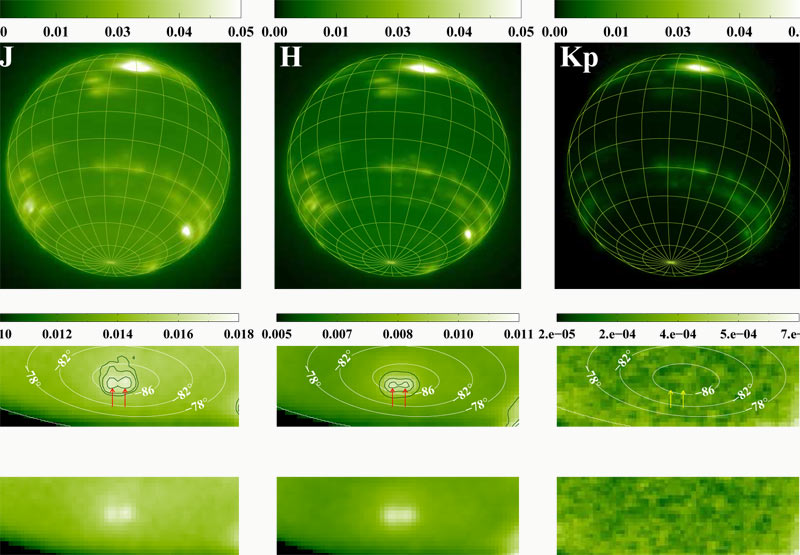Odd Cloud on Neptune Seen Splitting Into Two

A cloudy patch that is typically seen over the south pole ofNeptune was spotted in double by astronomers after it briefly split in two, asviewed by ground-based telescopes in 2007.
The cloud feature has been seen near Neptune's south polesince the Voyager 2 spacecraft visited the planet in the late 1980s. But whatexactly it was and what processes on the planet generated it weren't known then,as telescopes on Earth can't see Neptune well enough to resolve such smallfeatures.
"What we knew about it was that there was a spot,"said Mate ?d?mkovics, a researcher at the University of California, Berkeley anda member of the team that made the new observations.
In 2007, measurements indicated that the atmosphere at the pole waswarmer than those at other latitudes, which suggested that the feature nearNeptune's pole could be similar to the persistent storm seen over Saturn'ssouth pole. Saturn's polarvortex seems to be a much larger version of hurricanes on Earth, onlystationary. Like a hurricane, that polar vortex features a calm eye surroundedby a wall of bright clouds.
From July 26 to 28, 2007, a team of astronomers observedNeptune with the 10-meter Keck II telescope atop Mauna Kea, Hawaii. The observationsfrom July 26 showed two distinct features near Neptune's south pole, not one.But on the 28th, there was only a single cloud feature again.
The team analyzed the observations and determined that thedouble cloud feature changing was real, and not just a case of low resolutionseeing what was really two clouds as one.
The finding, detailed in a paper accepted to the journalIcarus and posted as a pre-print paper to the online site arXiv, suggests thatthe cloud feature sits in a regions of strong convection, or overturning layersof the atmosphere. The observation is another piece of evidence suggesting asimilarity between the polar atmosphere of Neptune and that of Saturn, ?d?mkovicstold SPACE.com.
Get the Space.com Newsletter
Breaking space news, the latest updates on rocket launches, skywatching events and more!
To really find out details about the cloud feature though, aspacecraft would have to fly to Neptune and take more close-up pictures, ?d?mkovicsadded. The team does plan to apply for more telescope time to see if they cancatch the cloud splitting again though.
Understanding the dynamics that cause the cloud feature onNeptune and how they relate to those on Saturn doesn't just help in ourquest to better know our own solar system. Because most of the extrasolarplanets that have been found so far are also gas giants, investigating theplanets in our solar system directly impacts our understanding of those inother systems, ?d?mkovics said.
- Top10: The Wildest Weather in the Galaxy
- Images:Casting Our Solar System in a New Light
- Whena Comet Smacked Jupiter
Join our Space Forums to keep talking space on the latest missions, night sky and more! And if you have a news tip, correction or comment, let us know at: community@space.com.

Andrea Thompson is an associate editor at Scientific American, where she covers sustainability, energy and the environment. Prior to that, she was a senior writer covering climate science at Climate Central and a reporter and editor at Live Science, where she primarily covered Earth science and the environment. She holds a graduate degree in science health and environmental reporting from New York University, as well as a bachelor of science and and masters of science in atmospheric chemistry from the Georgia Institute of Technology.









